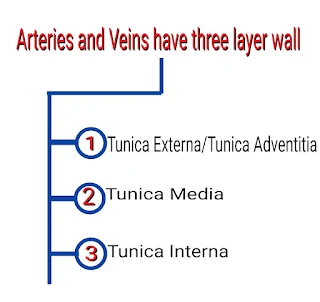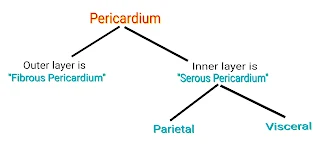What is coronavirus ?
Coronavirus is a type of virus. it is a largest category for an RNA virus. there are many different kinds, and some cause disease. a coronavirus disease COVID-19 as an infection disease identified in December 2019, caused by SARS-CoV-2 virus, a pandemic of respiratory illness, called COVID-19.
SARS-CoV-2 stands for Severe Acute Respiratory Syndrome.
COVID-19 stands for :-
'CO' stands for corona, 'VI' stands for virus 'D' stands for disease. This disease was referred to as '2019' novel 'coronavirus' or '2019-nCoV'. The coronavirus is a new virus linked to the same family of viruses as SARS and some types of common cold.
Where was COVID-19 first discovered ?
The first known infection from SARS-CoV-2 were discovered in Wuhan, China.
Who issued the official name of COVID-19 ?
The official names of COVID-19 and SARS-CoV-2 were issued by the WHO on 11 February 2020.
How does COVID-19 spread between people ?
We known that the disease is caused by the SARS-CoV-2 virus, which spreads between people by several different ways -
The virus can spread from an infected person's mouth or nose in small liquid particles when the cough, sneeze, speak, sing or breath. These particles range from larger respiratory droplets to smaller aerosols.
Direct close contact :- one can get the infection by being close contact with COVID-19 patients with in 1 meter of the infected person especially if they do not cover their face when coughing or sneezing.
Indirect contact :- the droplets survive on surfaces and cloths of many days. Therefore, touching any such infected surface or cloth and then touching one's mouth, nose eyes or shakes your hand can transmit the disease.
Larger droplets may fall to the ground in a few seconds, but tiny particles can linger in the air and accumulate in indoor places, especially many people are gathered and their is poor ventilation.
One recent small study say that the virus is also sometimes found in the faeces but rarely in blood.
What is the incubation period for COVID-19 ?
An incubation period is the time between when you contract a virus and when your symptoms start.
According to the CDC (Centers for disease control and prevention) in December 2020, the symptoms show up people within 2 to 14 days after exposure to the virus.
A person infected with the coronavirus is contagious to others for up to 2 days before symptoms appear, and they remain contagious to others for 10 to 20 days, depending upon their immune system and the severity of their illness.
for many people, COVID-19 symptoms start as mild symptoms and gradually get worse over a few days.
What are symptoms of coronavirus ?
Most Common Symptoms :-
Less Common Symptoms :-
- Muscle or body aches and pains
- Discoloration of finger and toe
Serious Symptoms :-
- Loss of speech, mobility or confusion
Some people infected with the coronavirus have mild COVID-19 illness, and others have no symptoms at all.
In some cases, COVID-19 can lead to respiratory failure, lasting lung and heart muscle damage, nervous system problem, kidney failure or death.
Seek immediate medical attention if you have serious symptoms. Call your doctor or a heath care provider explain your symptoms over the phone before visiting doctors office or a health care facility.
People with mild symptoms who are otherwise healthy should manage their symptoms at home.
How many types of COVID-19 variants ?
There are many types :- Alpha (B.1.1.7), Beta (B.1.351), Gamma (P.1), Delta (B.1.617.2) and Delta Plus are the COVID-19 variants.
- Alpha Variant (B.1.1.7) :- The alpha variant of COVID-19 has caused the most destruction in the country. First identified in UK but which spread to more than 50 countries.
- Beta Variant (B.1.351) :- There is another dangerous beta variant of coronavirus. First identified in the South Africa but which has been detected in at least 20 other countries, including UK. Beta variant has strong ability to spread infection. even in many cases the vaccine had no effect on this variant.
- Gamma Variant (P.1) :- First identified in Brazil but which has spread to more than other 65 countries, including the UK. Sometimes it spreads rapidly due to its mutation.
- Delta Variant (B.1.617.2) :- First identified in India, appears to be spreading quickly in many countries. This variant is responsible for the second wave of COVID-19 in the country.
- Delta Plus Variant :- This variant is considered very dangerous. The Minister of Health said about this that the spread of this variant is rapid. It is tightly bound to the cells of the lungs. It also reduces the antibody response.
How do you protect yourself from this coronavirus ?
- Get vaccinated as soon as it's your turn and follow local guidance on vaccination.
- Keeping 6 feet of distance between yourself and others when out.
- Washing your hands frequently ( for at least 20 seconds ) with soap and water, especially after going to the bathroom, before eating, after blowing your nose,, coughing or sneezing.
- Use an alcohol-based sanitizer with at least 60% alcohol.
- Wear a properly fitted mask when physical distancing is not possible and in poorly ventilated setting.
- Avoiding touching your face ( particularly your eyes, nose and mouth ).
- Staying home as much as possible, even if you don't feel sick.
- Avoid close contact with people who are sick.
- Avoid crowds and gatherings of 10 or more people.
- If you develop symptoms or test positive for COVID-19, self isolate until you recover.
Who is most at risk severe illness from COVID-19 ?
People of any age, even children, can catch COVID-19, but it most commonly affects middle-aged and older adults. The risk of developing dangerous symptoms increase with age, with those who are age 65 and older at the highest risk of serious symptoms.
Risks are ever higher for older people when they have other health conditions like high blood pressure, heart and lung problems, diabetes, obesity or cancer etc.
However, anyone can get sick with COVID-19 and become seriously ill or die at any age.
What are the complications of COVID-19 ?
Complications of COVID-19 include :-
- Acute Respiratory Distress Syndrome
What are some severe consequences of the coronavirus disease ?
The COVID-19 viral strain directly impacts the lungs, reducing its capacity and limiting the intake of oxygen and leading to ARDS ( Acute Respiratory Distress Syndrome ) and pneumonia. it is especially deadly in individuals, who have underlying illness and respiratory illness or both.
In what condition does COVID-19 survive the longest ?
Coronavirus die very quickly when exposed to the UV light in sunlight. Like other enveloped viruses, SARS-CoV-2 survive longest when the temperature is at room temperature or lower, and when the relative humidity is low <50%.
How long does coronavirus last in the body, air and in the food ?
The novel coronavirus, SARS-CoV-2 is the virus responsible for causing the illness COVID-19, most people who developed COVID-19 symptoms improve without treatment in 2-6 weeks.
How long the virus lasts in the body depends on the individual and the severity of the illness. CDC advice that people who test positive for COVID-19 should isolate themselves.
CDC stands for The Centers for Disease Control and Prevention.
- No Symptoms :- 10 days after a positive test
- Mild or moderate illness :- 10 days after symptoms appear, and after 24 hours with no fever without using medication.
- Severe illness :- up to 20 days after symptoms appear
However, the virus may remain in the body at low levels for up to 3 months after diagnosis.
The study on surfaces also found that SARS-CoV-2 could survive in aerosol from for 3 hours. An aerosol is a fine mist of liquid suspended in a gas, such as air.
Currently, there is no evidence a person can contract SARS-CoV-2 from food.
The WHO state that coronaviruses need a live animal or human host survive, and they cannot multiply on food packaging surfaces.
The WHO suggest that washing vegetables and fruits as normal and washing hands thoroughly before eating.







































